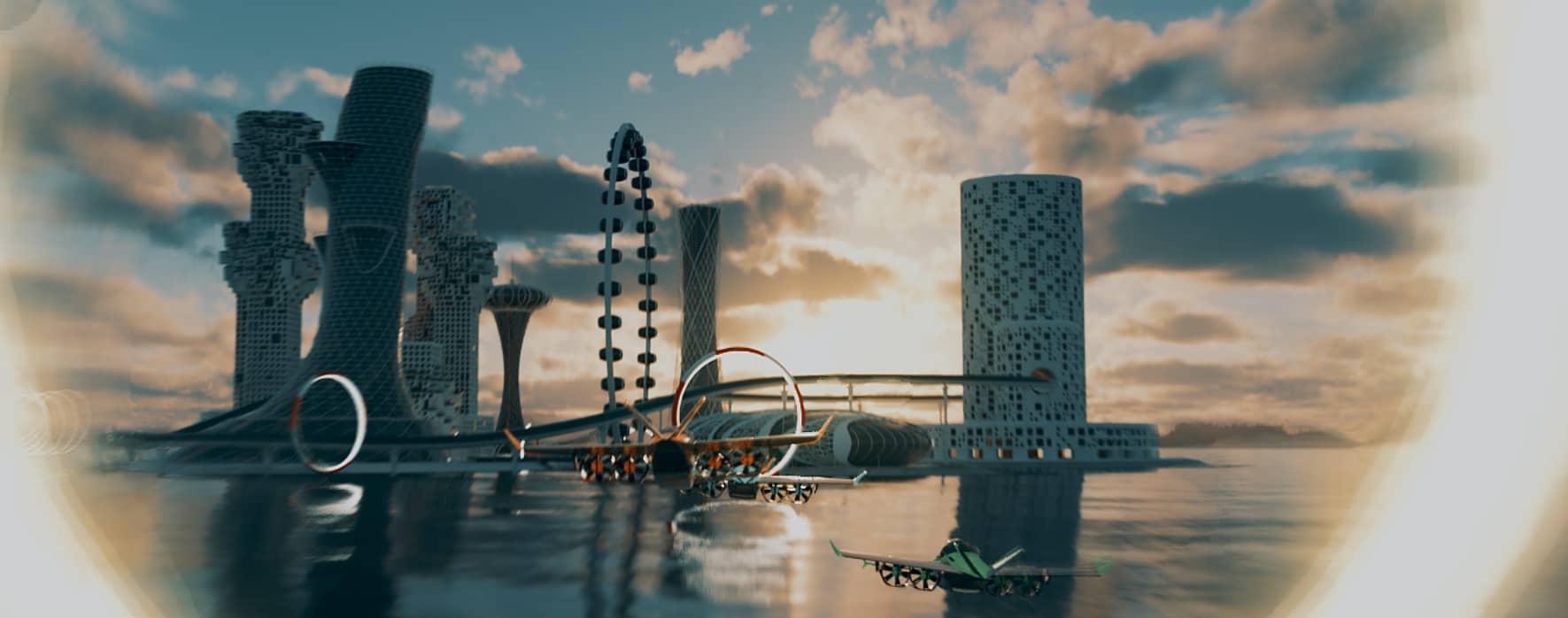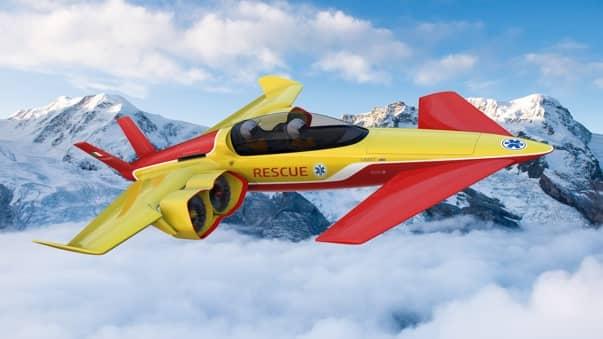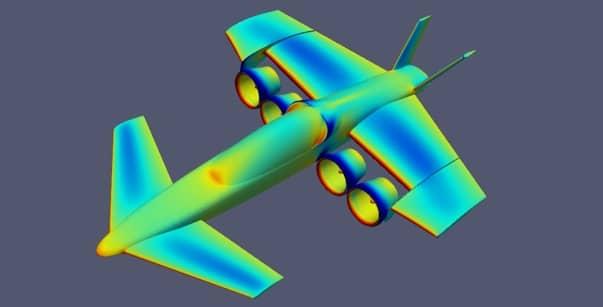🙋 About the Author
As a founder and CEO of multiple companies in the field of aviation, drones and other technologies, Lucas Marchesini co-founded Formula Air Grand Prix, with Cristian Mendez Carmona (who is the CEO) and other ex-colleagues. Now he leads Manta Aircraft SA which is developing the ANN2, the hybrid-electric V/STOL race plane that will be used for the series!
📢 Formula Air Grand Prix
In the near future, new ways of transportation are likely to be added to the mix Urban Air Mobility (UAM). The key promises of this upcoming way of moving people and goods in the larger cities are fascinating: faster travel at reasonable fares; safe and enjoyable flight experiences; and smoother integration with the other transport modes. This can't be done with the existing helicopters and airplanes, therefore new aircraft types are being designed and developed.

The Formula Air Grand Prix (FAGP) is a global air racing competition aimed at bringing the stakeholders of this industry together, giving them a platform to showcase their technologies to a larger and larger audience. As in many other disciplines, racing competitions are an effective way to foster advancement in technology. FAGP's goal is to accelerate the market entry of the best players in the industry.
Manta is developing the base aircraft for the series, the Manta ANN2. This, in turn, can be modified by the teams with the aim to improve its competitiveness. The development of the Manta ANN2 aircraft goal is to demonstrate the capabilities of a vehicle conceived as a HeV/STOL. That's H for Hybrid, e for electric and V/STOL for Vertical or Short Take-Off and Landing. In practice, it can take off and land vertically like a helicopter, and fly horizontally like an airplane.
One of the goals of the project is to make an aircraft with exceptional maneuvering capabilities resulting from this mix of airplane and VTOL characteristics: hover in midair; perform a backward flip; jaw and roll beyond what standard flight control surfaces – such as elevators, ailerons and rudders – would allow.
🌬 Propulsion layout

The propulsion layout is the result of a series of logical design choices:
- During take-off and landing, all the propulsion is needed to provide the vertical thrust that lifts the aircraft. By contrast, in horizontal flight, the propulsion needed is just a fraction of that thrust, as the remaining force comes from the aerodynamic lift produced by the wings. If you use the same thrusters in both modes, then they'll be working at around 15-20% of their maximum power for most of their life (remember that these aircraft are meant to spend 95% or more of their flight time as airplanes, and less than 5% as VTOLs).
- Using propellers, or any other form of "thruster" for vertical lift, means that they need to operate at high power for a short time. As this is the most demanding flight regime, you're obliged to optimize the propeller blades for vertical take-off and landing, leaving them less than optimal for other flight regimes such as mid- and high-speed horizontal flight. One option is to change the angle of the propeller blades depending on the flight regime (variable pitch props). This would require extra mechanical components that increase weight and also require more maintenance as well as spare parts in stock.
- The most reasonable solution is to choose a design point for the thrusters that falls somewhere in between the static and cruise conditions, with the effect of losing thrust in the demanding VTOL situation.
- To maintain the capability of vertical take-off and landing, additional thrusters are required. These can remain concealed in the fuselage during the winged flight to reduce drag in horizontal flight. And as they are of help only during take-off and landing, they can be fully optimized for such high-power static conditions, increasing efficiency in VTOL flight. The other thrusters, in contrast, are optimized for higher efficiency in horizontal flight mode.

✈ Aerodynamic Layout

The aircraft features a canard layout, with the pitch-control plane set in front of the main wing (traditionally, these surfaces are in the tail). This provides the following advantages:
- All the surfaces generate lift, thus increasing efficiency in cruise
- The Centre of Gravity is located between the two lifting surfaces, which is necessary to have the position of the fuselage thrusters in the bow and stern of the airplane
- A concentration of the most important structural components such as the wing-fuselage intersection, engine bay and main landing gear, thus reducing the structural weight, in comparison with having them dispersed along the fuselage
- A large part of the fuselage is kept free from the aerodynamic disturbances of engine air inlets and outlets
- A wide lateral angle of downward view for the pilots, which is particularly useful in the surveillance and search missions (and also in racing competitions)
- In terms of maneuverability, canards of this substantial dimension offer quick response in pitch and, through differential rotation (a difference in angle of attack between the canard wings), a fair contribution to the roll control power.
The positioning of the ducted fans underneath the main wing, ahead of the flaps, also provides advantages:
- The lifting performance of the main wing is increased at low speed, especially during short take-off and landing. Exploiting the "vectoring" of the wing thrusters increases the maximum take-off weight, allowing the aircraft to launch on short semi-prepared airstrips.
- As in every canard configuration the effect of the forward surface ('front wing") on the rear main surface ("main wing") is not negligible, in the adopted configuration, the presence of the large wing fans in front of the wing helps decreasing this effect. This is optimal in cruise.
🔌 Power Management
The Manta ANN2 features a hybrid propulsion system: a gas turbine running an electric power generator, batteries and electric motors. This configuration reduces size, weight and cost. The turbine allows increasing cruise range, as it is used to recharge the batteries during cruise flight (or at idle on the ground, eliminating the need for a recharging infrastructure). For VTOL operations extra energy is sourced from the batteries, and that’s when the max turbine power output is required.
🖥 Design Tools

Manta is following the fully simulated aircraft design approach, from the flight dynamics – through the use of Computational Fluid Dynamics (CFD) and wind tunnel data – to the different onboard systems (propulsion, electric, flight controls, etc.), being all integrated into a real time pilot-in-the-loop simulator. CFD have been extensively applied to analyze and optimize the pressure patterns on the aircraft, to obtain crucial inputs on lift and drag forces, and pitch, roll and yaw moments for the controller. And so on.
💡 Conclusion
Formula Air Grand Prix will be a fascinating playground and testbed for the upcoming technologies that will eventually make their appearance in the Urban / Regional Air Mobility scenery. Novel aerodynamic layouts, propulsion setups and drive train packaging will contribute to make it become a sensational sport!
Interesting links:
Formula Air Grand Prix
Manta Aircraft SA
Run Your Own Simulation
